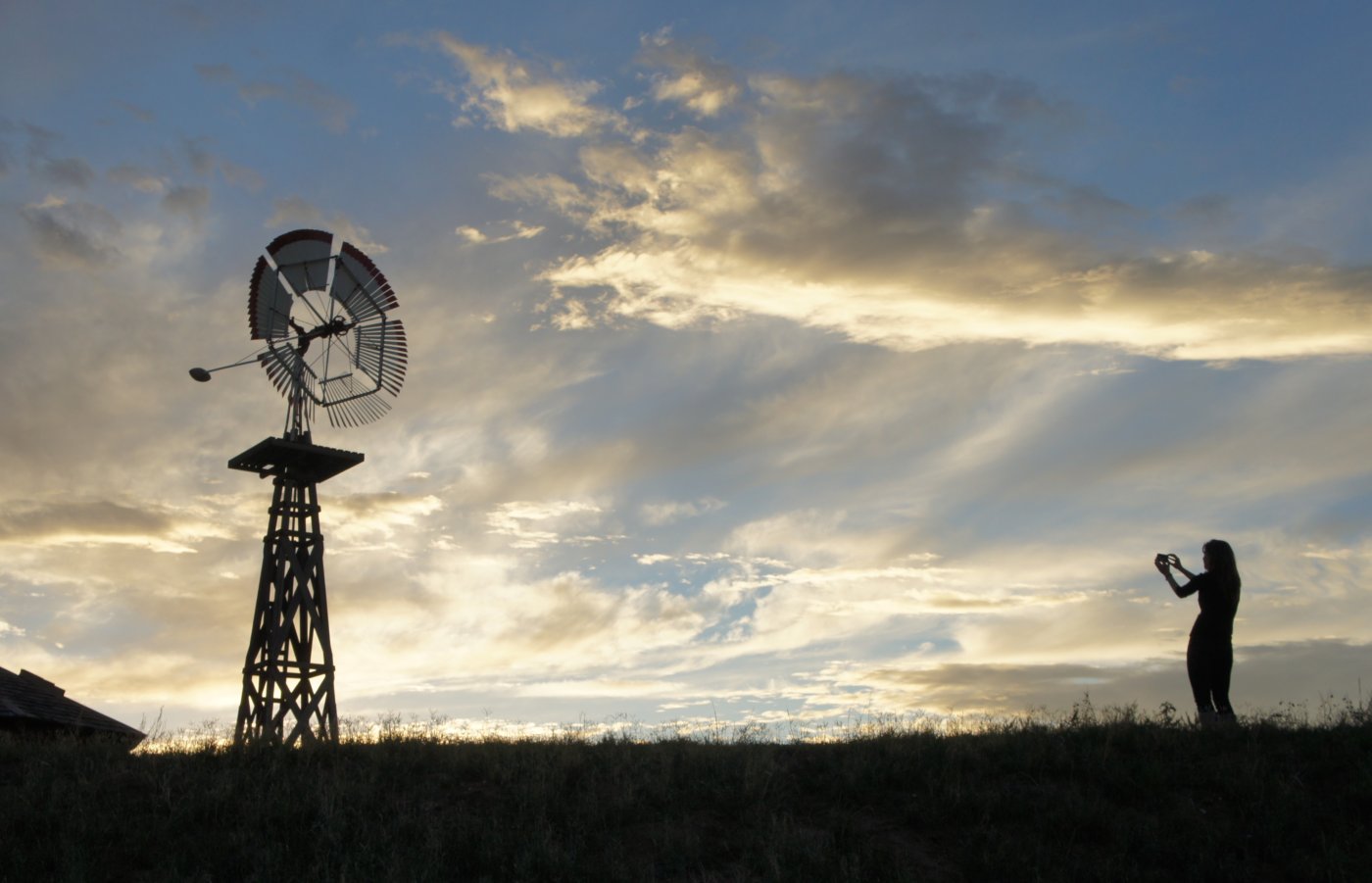By Carol Clark (Atlanta Science Tavern Contributor)
There is something both comforting and mournful about the creak of an old windmill coming to life in a breeze. The metal skeletons and pinwheel faces of windmills tower over the loneliest of places, totems to the people who staked a claim on vast, empty plains, where they stayed attuned to the slightest shifts of weather.

Growing up in northeast Texas, I’d occasionally catch glimpses of these whirling relics silhouetted in the distance, as our car rushed through the scraps of rural landscape separating suburbs and cities. But I didn’t fully appreciate windmills until I went to the annual meeting of the Society of Environmental Journalists last October, held in the West Texas town of Lubbock.
Lubbock is set in the Southern High Plains, where the economy is fueled by oil, gas, agriculture and wind. This year’s SEJ conference was themed: “Whiskey is for drinking, water is for fighting over.” Several hundred writers, scientists and policy makers descended on the town. We broke into groups for field trips, moving like flocks of flightless birds across the plains, baked by the relentless sun and scoured by the gritty wind. We learned about the hard-scrabbled history, recent record drought, and possible future scenarios of this remote, yet influential, region.
One of the highlights for me was the story of the humble windmill’s key role in settling parts of America where surface water is scant, including the Southern High Plains.
In 1854, American Daniel Hallady invented a self-governing windmill, which automatically turned to face whichever way the wind blew. Weights allowed the wooden blades to swivel in a way that also controlled the speed of operation, to reduce wear and tear on parts and the chance of breakage in strong winds. It was simple, streamlined and affordable for pioneer families who wanted to tap underground sources of water. Larger windmills sprouted up every 20 miles or so along railroad lines, where they were needed to pump water for steam engines.
A visit to Lubbock’s American Wind Power Center drove home the importance of the windmill to opening up the West. The center’s collection of vintage wind machines gives you an idea of the high regard, and even affection, people must have felt for them. Their makers branded them with romantic names like “Iron Man,” “Eclipse,” and “Star.” Windmill weights entered into the realm of folk art, taking on whimsical shapes of squirrels, horses and roosters.
Wandering beneath the gently whirring blades, I imagined how soothing the sound must have been to people who relied on windmills for their water.
The windmill helped power a sustainable way of life for decades across the Southern High Plains. Things tilted out of balance during the Great Plow Up. The U.S. government artificially raised the price of wheat and encouraged farmers across the Plains states to rip out deep-rooted native grasses and ramp up crop production to feed the troops in World War I. The result was the environmental catastrophe known as the Dust Bowl. During the 1930s, the wind churned up all that loose dirt and spun it into dark, boiling clouds that suffocated toddlers, obliterated the sun and swept away livelihoods.
The dust had scarcely settled when the main lesson of that disaster was largely forgotten: Excess comes at a heavy price.
By the 1950s, advances in electrical pumping technology had made the windmill nearly obsolete. Farmers and ranchers from Nebraska to West Texas could now exploit their underground water supply, known as the Ogallala Aquifer, to an extent never before possible.
It took 12 million years for rain to seep down and fill the Ogallala Aquifer, one of the world’s largest underground water systems. During the past 50 years, we’ve emptied half of it, mainly through intensive irrigation.
So what does the future hold, for West Texas and the rest of us, as the climate warms, the population booms, and the demand for fuel, food, water and other consumer goods keeps growing?
It depends on how you spin the story.
Oil and agriculture boosters downplay the looming questions surrounding our heavy reliance on fossil fuels and industrial-scale irrigation. And West Texans can now boast about renewable energy, since the region produces more wind power than any other state. The old-fashioned windmills have morphed into sleek, high-tech wind turbines. So what if they lack charm: Utility-scale wind turbines, some with blades as long as 120 feet, can generate massive amounts of electrical power.
The “whump-a-whump” of a giant wind turbine in full bore has been compared to heavy sneakers tumbling in a dryer. That’s the sound of progress. And how comforting, to be reminded that we can harness the wind and generate electricity to rapidly dry our latest pairs of designer sneakers.
Carol Clark is Senior Science Communicator at Emory University, where she edits the Web site eScienceCommons.
This post was first published on Wonders & Marvels in November 2011.
